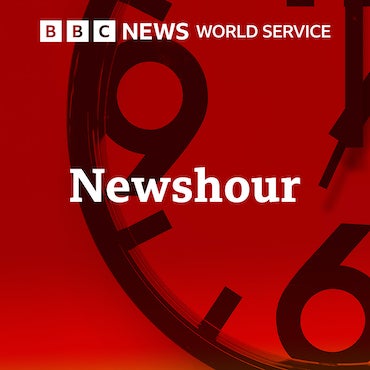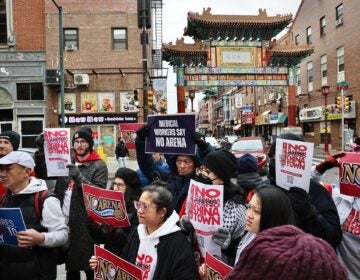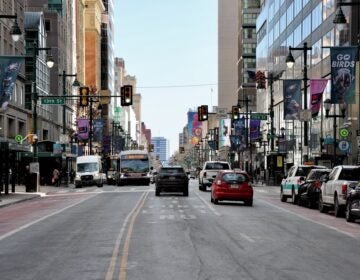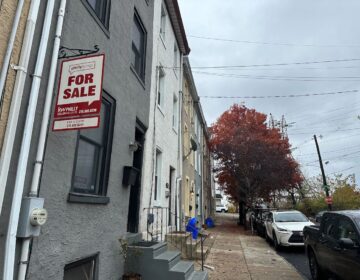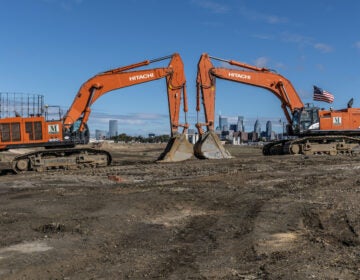Comcast and Sixers ownership just invested nearly $60M in Philly’s Market East corridor. Here’s what to know
The acquisitions were finalized at the end of last month. They are part of a renewed commitment to overhaul the struggling stretch.
Listen 0:54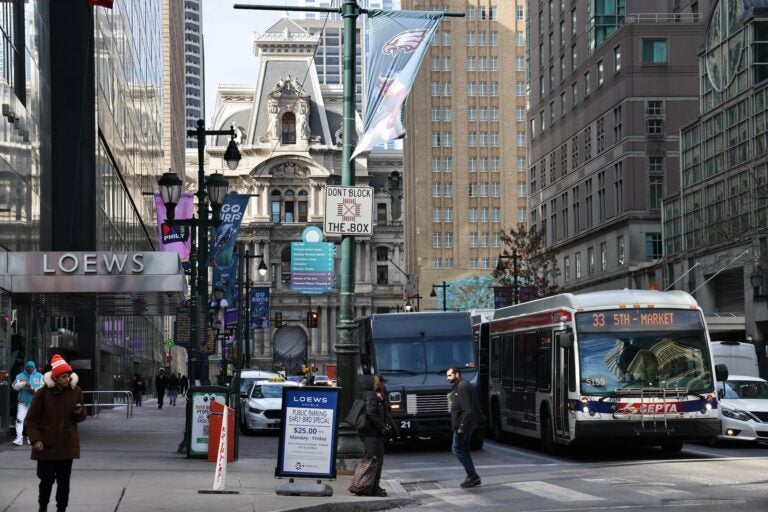
The Market East commercial corridor stretches 14 blocks from City Hall to the Delaware River. (Emma Lee/WHYY)
Have a question about Philly’s neighborhoods or the systems that shape them? PlanPhilly reporters want to hear from you! Ask us a question or send us a story idea you think we should cover.
In mid-January, the Philadelphia 76ers and Comcast Spectacor announced they were teaming up to build a new arena at the Sports Complex in South Philadelphia.
The news was a stunning reversal. A little more than a month earlier, City Council had authorized the team’s $1.3 billion proposal to build a basketball arena along the struggling East Market Street in Center City.
Six months later, there are still few details about the new sports facility that’s expected to open in 2031. But the pair has made some real estate moves as part of a renewed commitment to help revitalize Market East, a corridor that has struggled to thrive for decades despite millions in investment.
Here’s what we know
Comcast and Harris Blitzer Sports & Entertainment, which owns the Sixers, recently closed on a group of commercial properties on the south side of East Market Street between Ninth and 11th streets.
The duo now jointly owns 920–938 Market St. and 1000–1024 Market St.
The four transactions, which occurred on June 27 and 29, cover the acquisition of four parcels totaling $56 million, according to Sixers spokesperson Jacklin Rhoads.
“Since announcing our partnership, both the 76ers and Comcast have been clear and consistent: We want to be part of the process to re-energize East Market Street, once America’s premier commercial corridor and the bridge between City Hall and Independence Hall,” said David Adelman, chairman of the joint venture between the two companies, in a statement.
For now, there are no details about what the companies plan to do with the properties.
“We will be developing our plans for the properties we just acquired over the coming months and we look forward to sharing those plans more publicly at the right time,” Adelman said.
The news comes as the city prepares to start work on a master plan for the beleaguered corridor.
Rhoads said that process will not play a role in the redevelopment of these properties.
For the moment, the partnership is not expected to acquire more properties along East Market Street.
What did they buy?
The low-rise properties acquired by Harris Blitzer and Comcast sit across the street from the Fashion District shopping mall, which has floundered since opening in 2019. The arena in Center City would have replaced a third of the mall between 10th and 11th streets.
The buildings date back to the early 20th century and have housed a variety of national chains, including H&R Block, Subway and Rite Aid, which was later used by Spirit Halloween after the pharmacy closed.
The group also includes cash-for-gold stores and the former Robinson department store building.
The partnership purchased 920–934 Market St. for $23.5 million; 936-38 Market St. for $6.75 million; 1000–1008 Market St. for $15 million; and 1010–24 Market St. for $10.75 million.
Before abandoning the Center City arena proposal, Mayor Cherelle Parker said Harris Blitzer planned to bring 380 residential units, 28,000 square feet of retail and 127 parking spaces to 1000–20 Market St., according to the Philadelphia Business Journal.
A second phase of development called for redeveloping 920–38 Market St. That project was expected to feature 340 residential units, 26,000 square feet of retail and 114 parking spaces.
It’s unclear if Harris Blitzer and Comcast plan to pursue those plans under this partnership.
Some real estate and industry experts say the corridor will need plenty of housing in order to bounce back.
“At the end of the day, what makes any commercial corridor tick is people,” said Job Itzkowitz, executive director of the Old City District, in February.
“If there’s not an opportunity for office workers, which there isn’t, and there’s not going to be a deus ex-machina event like the creation of an arena, then there needs to be housing. We have to make it as easy as possible to build as much housing as possible,” he said.
What’s the future of Market East?
Experts have mixed feelings about the future of East Market Street now that an arena is off the table.
While some say not having an arena makes it easier to reimagine the corridor, others argue that the task will be much harder to achieve without having the 18,500-seat facility as an anchor.
Mohamed “Mo” Rushdy, president of the Building Industry Association of Philadelphia, has said it will be difficult to replace the lost foot traffic and indirect revenue generated from the scrapped arena project.
The facility was expected to be open 150 nights a year between games, concerts and other events.
“Developers look to develop in areas where there is life and a commercial corridor that is viable. Currently, Market East is not a viable corridor. It needed that boost,” said Rushdy, who is also a managing partner of the Riverwards Group.
Lauren Gilchrist, executive vice president and market leader for Newmark Greater Philadelphia, sees things differently.
Without the arena, Gilchrist said the city has a clean slate to create a master plan that offers developers a clear road map backed by the public policy community, elected officials and residents.
“This just changes some of the tone of the conversation with investors, but it doesn’t necessarily make it worse,” Gilchrist said earlier this year.
City spokesperson Karen Guss said Monday that there is no timeline for the start of the master plan process.
“We expect to share details soon about the process the administration will pursue, along with key external, internal and community stakeholders, for short- and long-term planning for East Market Street,” Guss said.

Subscribe to PlanPhilly
WHYY is your source for fact-based, in-depth journalism and information. As a nonprofit organization, we rely on financial support from readers like you. Please give today.

